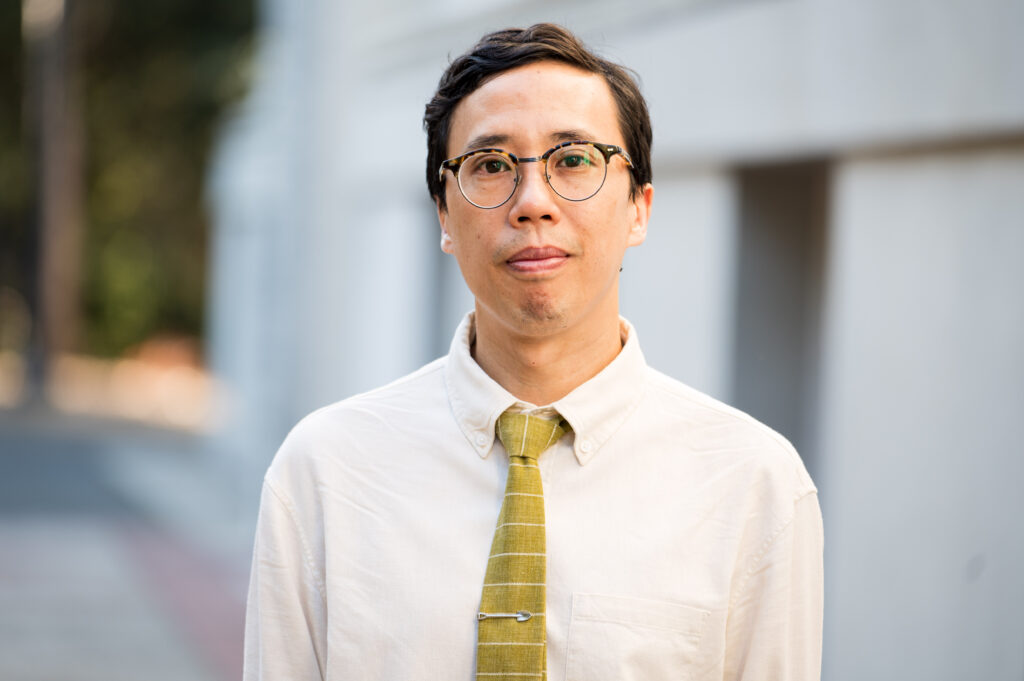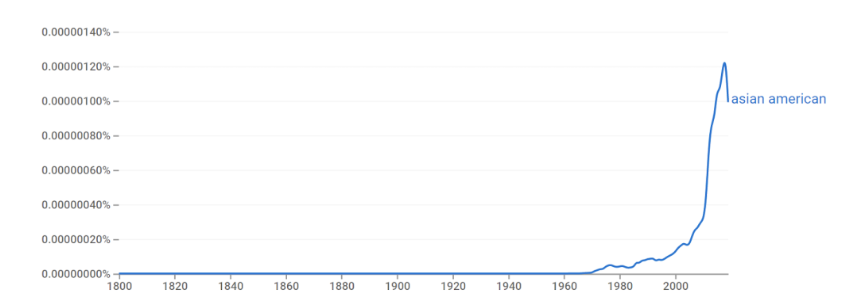Nine years ago, when Long Le-Khac was a newly minted Ph.D., he hit a research roadbump. He'd planned to use data analytics to map the various settings featured in Asian American literature, testing a hypothesis that this fictive geography had become increasingly international. But first, the computer would need answers from him: Of all the literary works in the world, which ones should it include as "Asian American" in its analysis?
That roadbump forced Le-Khac, now an assistant professor in Berkeley's ethnic studies department, to confront a more existential query: What does calling something "Asian American" mean? Who or what is included under that umbrella?
Wrestling with that definition, Le-Khac said, was a "digression that increasingly got bigger and bigger and richer and more interesting to me."
Nearly a decade later, it has resulted in a recently published, 1,900-entry long database of the Asian American literary canon, which he hopes will allow other scholars to dig into these thorny issues.
A fraught question
Le-Khac said he hopes the dataset illuminates a central issue: "How has the canon of Asian American literature changed over time, as defined by the people who study it?"
That conclusion is bound to be complicated. The dataset starts in 1971 because the term "Asian American" didn't exist until 1968, when two UC Berkeley student activists coined it as a way to unite various ethnic groups while rejecting old, exoticizing terms. Before that phrase took hold in popular culture, scholars started using it in their analysis; in doing so, they delineated what works got attention and "counted" as Asian American.

Hagit Caspi
But different academics have varying definitions, said Le-Khac. One might deem anything created by an American writer of Asian descent "Asian American," while another might say the content itself has to be about Asian American experiences, regardless of the creator's background. If something adopts aesthetics traditionally associated with an Asian culture or responds to racist Orientalist tropes, like adaptations of Madame Butterfly, does that make it Asian American?
"When we were gathering data, we tried not to impose our own definitions so that we could capture the whole mess of various definitions colliding with each other in the formation of this canon," Le-Khac explained.
Instead, the researchers wrote code to comb through academic publications whose summaries featured the keyword "Asian American" or appeared within journals dedicated to Asian American studies and extracted every single piece of media discussed. Ultimately, that totaled 1,886 references to nearly 984 works made by 783 authors.
That number, it should be noted, doesn't include works that didn't receive scholarly attention, although documenting the Asian American canon outside of academia is one of Le-Khac's next projects. He said he wanted to first focus on the scholarly canon because the concept of art being "Asian American" was circulated among academics before it became more broadly adopted in popular culture.

Le-Khac and his researcher assistants, Kate Hao and Taylor Huie, then gathered additional information about each text, including its form, publication year, how often it was mentioned in academic studies, its publisher and metrics of success, such as whether it was a New York Times bestseller or had won awards. They also entered demographic information about the works' authors: gender, ethnicity, educational attainment and what generation of immigrants they were, among other characteristics.
In the dataset, one can find Chinese American playwright David Henry Hwang, Palestinian American poet Naomi Shihab Nye and novelist and Berkeley professor emerita Maxine Hong Kingston. Beyond novels, plays and poetry, the collection includes the comic book World War Hulk - penned by a biracial Korean American writer - and films like Crazy Rich Asians and Breakfast at Tiffany's. The latter, based on a book by Truman Capote and directed by Blake Edwards, features a white actor playing a painfully stereotyped Japanese American character.
The publication of the dataset, which the researchers plan to update every five years, is only the first step. Now, Le-Khac as well as other scholars can search for quantitative answers to key questions about Asian American literature - a computational approach to the humanities known as cultural analytics.
"This canon we have built is uneven, as most canons are. But for a minority canon to replicate unevenness is a fraught and charged thing, and is worth scrutiny."
Long Le-Khac
When Le-Khac talks about the dataset, he frames it as a chance for academics to audit what's considered the Asian American canon and see who might be missing or underrepresented. A 2021 study he conducted, for instance, found the number of Filipino authors being cited was declining.
"This canon we have built is uneven, as most canons are. But for a minority canon to replicate unevenness is a fraught and charged thing, and is worth scrutiny," Le-Khac said. "One of the major impulses behind this dataset is to help us as a community of scholars look at what we are actually building and see if we need to do better."
The dataset could also help researchers test other hypotheses, such as what kinds of writers become bestsellers or whether the writers of Asian American works that received scholarly attention are geographically clustered in particular regions.
For his part, Le-Khac is looking into how frequently the authors in the dataset possess prestigious academic degrees. The preliminary results show an "uber credentialed" set of writers.
That, he said, is a "pretty problematic thing, because one of the central narratives that the field tries to critique and debunk is this idea of the model minority." He's also researching how the Asian American canon defined by scholars differs from a more general-audience canon created by Goodreads bookworms.
Building the dataset had the added perk of exposing its already well-read creators to even more Asian American stories. Huie, a Berkeley senior double majoring in Asian American studies and chemistry, would often save the title of a text she was researching metadata for - particularly works that might help them, as someone of Taiwanese Chinese descent, understand the experiences of different ethnic groups in Taiwan. Her private high school in Los Angeles had primarily assigned readings by white authors, Huie recounted.
"[This research] really broadened my horizons, and it got me a lot more excited about Asian American literary works," they said.






